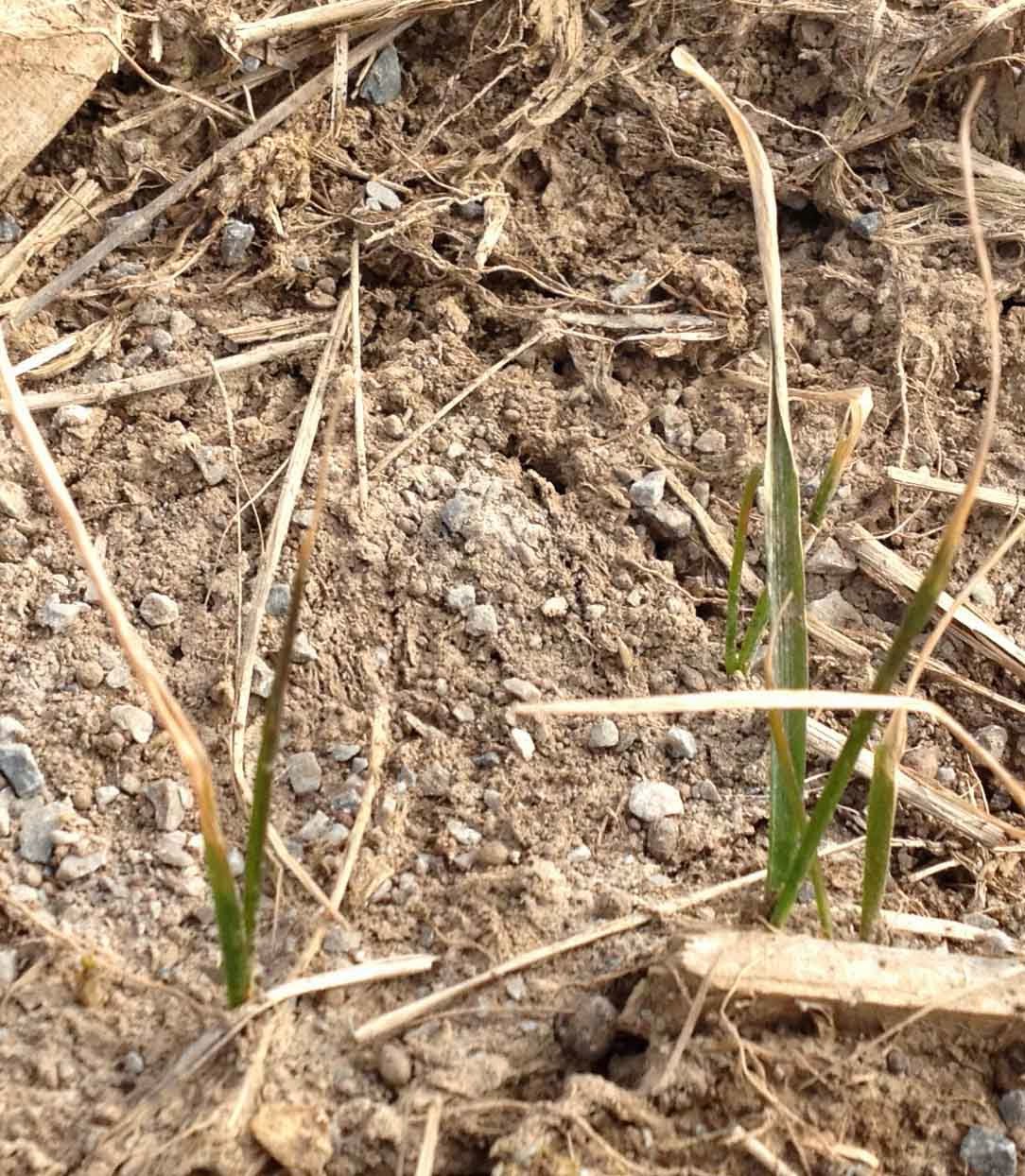Chad Lee, Extension Agronomist, University of Kentucky, Lexington
Carrie Knott, Extension Agronomist, University of Kentucky, Princeton
Edwin Ritchey, Extension Soil Scientis, University of Kentucky, Princeton
The warming weather forecast this week will encourage many people to take a look at their wheat. We need about 7 to 10 days of good growing conditions before we will fully know the status of the wheat. That means, even though we will walk fields this week, we need to be careful about making too many decisions just yet. We can do tiller counts, we just won't know if they are viable tillers for a while.
While we won't know the status of the wheat crop for at least 10 more days, now is the normal time for the early shot of nitrogen. We can do tiller counts and make the assumption that most will survive. We can adjust the nitrogen (N) rate for total tiller count (which includes the main shoot).
Total tiller counts below 70 tillers per square foot should receive about 50 to 60 lbs of N per acre (with the higher rate for no-tillage). If 70 to 100 tillers per square foot are measured, then about 30 to 40 lbs of N per acre can be added. If there are any fields with more than 100 tillers per square foot, then no N should be added at this time.
While we are entering the time we normally apply our first shot of N, fields may not be ready for that first shot. A lot of fields are extremely wet and with the thawing, will also need to dry out some before we can get across the fields. (Applying N to frozen fields increases our chances of simply losing it, especially when more rain is in the future.) This may be a year when we are forced to make a single shot of N for the crop a little later in the season. Considering that a lot of our crop is behind schedule on development, waiting to apply N when the soils and the crop are in better conditions, might be our best option this season.
Carrie Knott, Extension Agronomist, University of Kentucky, Princeton
Edwin Ritchey, Extension Soil Scientis, University of Kentucky, Princeton
 |
| Wheat tillers damaged from the freezing temperatures. At least 7 to 10 days of good growing conditions are needed to assess damage. |
While we won't know the status of the wheat crop for at least 10 more days, now is the normal time for the early shot of nitrogen. We can do tiller counts and make the assumption that most will survive. We can adjust the nitrogen (N) rate for total tiller count (which includes the main shoot).
Total tiller counts below 70 tillers per square foot should receive about 50 to 60 lbs of N per acre (with the higher rate for no-tillage). If 70 to 100 tillers per square foot are measured, then about 30 to 40 lbs of N per acre can be added. If there are any fields with more than 100 tillers per square foot, then no N should be added at this time.
While we are entering the time we normally apply our first shot of N, fields may not be ready for that first shot. A lot of fields are extremely wet and with the thawing, will also need to dry out some before we can get across the fields. (Applying N to frozen fields increases our chances of simply losing it, especially when more rain is in the future.) This may be a year when we are forced to make a single shot of N for the crop a little later in the season. Considering that a lot of our crop is behind schedule on development, waiting to apply N when the soils and the crop are in better conditions, might be our best option this season.
No comments:
Post a Comment
Note: Only a member of this blog may post a comment.